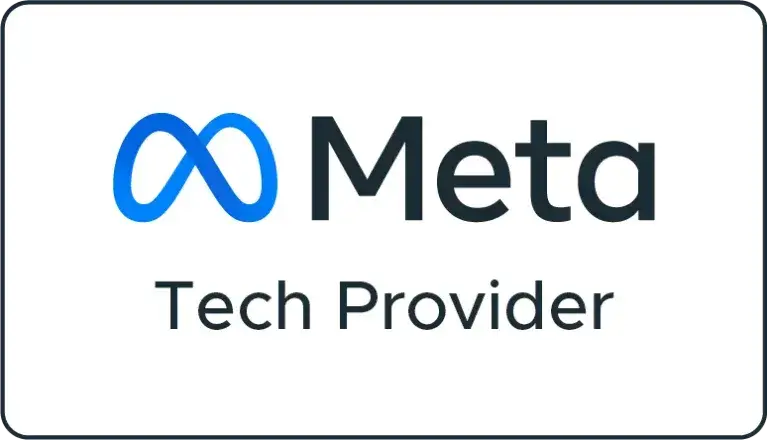Tips for Google Analytics for New Businesses
Congratulations on getting the ball rolling on your digital marketing adventure! As a new business owner, building a website is just the start. However, how do you know if that’s enough?
This is where Google Analytics steps in.
Can you imagine having a powerful magnifying glass that shows what your website visitors are doing on your website at any given moment? Google Analytics is that, and much more. This free web analysis service by Google enables you to track your website’s traffic behavior in real-time, providing answers to the primary business question: “How does my website perform?”. Furthermore, it helps measure your ROI and get your business to the next level based on the concept of data-based decisions.
Our comprehensive guide on how to unlock the power of Google Analytics for new businesses contains everything you need to know. From the benefits and setup to the most useful tips, find the information you need to start making decisions based on analytics, not guesswork. We want you to feel confident about decoding your website traffic and understanding your visitors’ behavior for continued growth.
Here’s what you need to achieve by the end of this blog post:
If you plan to understand website traffic to answer the question of who these websites are and where they come from, continue reading. If you are interested in conversions and indicators of business account success in particular, namely your visitors buying a product or service or subscribing to the newsletter, read more about Google Analytics.
Suppose you are determined to make informed, data-driven decisions that will increase your business and become a sustainable source of revenue. Read more about Google Analytics. Whether you sell handmade jewelry, offer consulting services, or boost your photography career, Google Analytics will change your life and the life of your business.
Let’s learn! Why Google Analytics is Important for Business
Running a brick-and-mortar store blind to who your customers are, where they come from, and what products they browse sounds like a recipe for disaster. Your website is your virtual storefront, and Google Analytics is the window that shows what’s happening in the street.
Here is how Google Analytics helps your business get its hands on some vital data.
In terms of who our traffic is:
Who are the visitors? Learn the demographics, like age, location, and interests, to know your audience better. Where do they come from? Discover the sources of your traffic (organic search, social media referrals, paid advertising campaigns, users who know you, and typing your domain right into a browser URL bar) to focus on those marketing channels.
What pages do they see? Find out which website pages attract many people and what keeps them interested. You can check which content is popular, see what needs improvement, and create a content strategy accordingly.
How is their stay on the site? Monitor the average time spent on your site by a visitor to understand what interests them the most and where they might get bored and leave.
In terms of conversions: What are conversions? Conversions are the site’s interactions – sales, email subscribers, e-book downloads, whitepaper downloads.
What are the desired interactions?
- Analyze sales performance: If you run an e-commerce website, Google Analytics can show you how well your products sell, your popular products and categories, and your target customers’ purchase paths in your shop. This information can be used to optimize your product offerings or timing.
- Making Data-Driven Decisions for Growth: Armed with the wealth of data from Google Analytics, you can make various decisions about your website and marketing strategies.
For example:
Website optimization: You may spot areas of your website that are confounding, leading to a failure in conversion. You can use A/B testing to test changes in website design, purchase flow, and webpage content.
Content strategy: You want to explore what kind of content resonates with your audience based on user actions.
Marketing campaign optimization: Finding out which online entry channel produces the most qualifiers and the highest conversion rates will allow you to split your advertising budget more judiciously. The capacity for data-driven choices will help you build a customer-centric organization, focusing on initiatives that gain visitor numbers, persuade them to become paying clients, and help you reach your business goals.
In the following section, I will provide you with a beginner-friendly setup for using Google Analytics for your website.
Getting Started with Google Analytics
A Beginner’s Tutorial Are you anxious to put Google Analytics to the test for your company? Follow the steps below to get started: Setting up your Google Account: – Visit the Google Analytics website: Open Google Analytics: [invalid URL removed] and click “Start for free.” – Login with your Google account: If you already have a Gmail account, a YouTube channel, or a Google account for any other purpose, you may use it to log into Google Analytics. If you don’t have one, you may create a new Google account.
Set up your account property: Pick a name that is clear and descriptive for your website, as shown on your business name website. Specify your website time zone and the currency to be used to properly define the data settings.
Tracking code implementation: This is the code that is used by Google Analytics to collect data from your website. You will be given a code snippet that you should put in the header section of the website code. In this case, there might be a difference in how to execute the steps depending on the program you use to build your website.
For example: Wix or Squarespace will have a built-in integration in which you will be provided with the steps on how to sync it with your Google Analytics account. In other words, you are to manually paste the code in the header section of the website code.
For verification: Google Analytics will need some time to start collecting data. You can ascertain the verification status in your Analytics account setting. Congrats, your Google Analytics is now set up for your website. Now, let us familiarize ourselves with the user interface and surf around basic usage.
Familiarize Yourself with the interface: The interface might appear too much, but consider the following areas to get started.
Reporting: This is where you will find all the report-based information and visualizations from traffic to user behavior and conversion.
Admin: This is where you can edit all your account properties and allow user access, among other things.
Customization: You will have the ability to customize the reports and dashboards to get the most important metric to your business.
Before moving on to the next section, here’s a high-level overview of some essential reports that can help you get started:
Audience: This section provides information about your website visitors. You can learn about their demographics, location, interests, and the devices they use to access your website.
Acquisition: These reports can tell you the source of your website traffic. For example, you can learn where your visitors come from, such as through organic search, social media, or paid advertising.
Behavior: This section analyses how the users interact with your website. It includes information about the number of page views, average session duration, and your website’s most popular content.
Conversions: This is the main section where you can learn how to track your website’s critical calls to action and calculate the conversion rate.
In the following sections, I will elaborate on each of these reports and offer you the best practices on how to make the most of them. Optionally, you can integrate Google Analytics with the following tools.
Google Search Console: This helps you understand how Google sees your website and how well it is performing on search results. Currently, this is a new feature in Google Analytics, which is still in beta version.
Google Ads: Offers valuable information on how your paid ads perform. Integrating Google Analytics with these two instruments helps to get a more comprehensive overview of how your visitors find you and engage with your content and offers. Finally, in the next section, I will provide you with a few tips that you can immediately implement to get the most out of your Google Analytics and get insights that matter for your new business.
E-commerce website: Conversion rate, average order value, customer acquisition cost.
Lead generation website: Number of leads generated, cost per lead, lead conversion rate.
Blog or content website: Organic traffic, page views per session, bounce rate as a percentage of visitors leaving your website after opening one page. Depending on your business goals, there may be additional KPIs worth monitoring.
When you have a good grasp of the KPIs you need to track, you can prioritize your Google Analytics reports and dashboards to ensure you have the most important data to help you track progress toward these goals. OTR = Analyze user acquisition channels to see how visitors find you.
The Acquisition report in Google Analytics reveals where your website traffic comes from, and knowing these sources will allow you to optimize your marketing effort.
You can also: OTR = First, make sure you know where it is the best to focus your energy. Are most of your traffic sources organic search, social media referrals, or paid advertising campaigns? OTR = Then, consider whether you have overlooked some channels from which your traffic is coming in.
If you have, you can decide to take advantage of that source. OTR = Finally, you’ll be able to measure the performance of a campaign if you run one from, say, April to June 2017. With Google Analytics, you can see how these sources contribute to your website’s traffic. OTR =.
By understanding where your users are coming from, you can allocate your marketing budget more effectively and focus on acquiring high-quality leads that are more likely to convert into paying customers.
- Track user flow: You can also see how visitors move around your user website. If you notice bottlenecks or drop-offs, you can streamline the path to the user to help them achieve the desired goal. Desired actions can include purchasing, signing up for your email list, or working with you.
- Analyze a website’s speed: You can determine how quickly your website loads with Google Analytics. Longer loading times can have a detrimental impact on your conversion rates. Consider optimizing your photos, compressing code, and improving the server if your website is currently sluggish. In essence, by knowing how your visitors interact with your website, you can enhance areas for optimization, create a better website experience, and increase sales conversions.
Goal Tracking to Measure Conversions and ROI: Another important feature of Google Analytics is a goal-tracking tool. In essence, you can use this option to set specific actions you want the visitors to your website to perform. This can be anything from acquiring certain merchandise, filling out a contact form, and downloading a brochure.
In addition to that, the tool allows you to measure the conversion rate, i.e., the percentage of performed actions, and calculate the return on investment for advertisement or other expenses. The setup process is simple: you have to indicate the address of the desired page and its name, description, and remark.
The possibilities of the goal-tracking tool are as follows:
- The opportunity to specify efficient paths of conversion.
- Ability to calculate campaign efficiency. This will help you identify the most profitable strategy from those you use and allocate more funds to this direction.
- Return on Investment calculation. This is the chief reason to track your goals since, without it, you would not be able to evaluate the payback of advertisement strategies. deduceInBackground = “The goal-tracking tool allows you to monitor the dynamics of customer behavior, conversion, and payback. All that is essential for optimizing your work direction and advertisement strategies.”
Personal experience:
- Key benefits of audience insights include Understanding your target audience. Demographics, such as age, location, gender, and interests, allow you to get more insights into the exact type of customers your website attracts. This knowledge will enable you to adjust your content strategy and marketing messages to better resonate with customers, fitting your ideal customer profile. Identify new market opportunities.
Audience insights can reveal that unexpectedly different demographics engage with your website. This will be a sign of new markets or customer segments you might be able to serve by adapting your content and marketing strategies. Refine your buyer personas. Audience insights will definitely help you make your buyer personas even more detailed, as you will work with real data from your website visitors.It will enable you to make your marketing more personalized and create content that meets exact audience specifications. Audience insights let you deepen your understanding of the target customer and tailor your website and marketing activities to attract and convert the right visitors. Generate Custom Reports for Deeper Data Analysis.
Although Google Analytics provides a wide array of pre-built reports, custom reports capability will give you additional value. Here is why custom reports are valuable: Focus on specific data points. Make your reports display only the metrics and dimensions relevant to your business goals.
Indeed, you are able to zero in on the metrics that matter most and get deeper insights into your data. Compare different time periods. You will be able to see whether your website performance has improved over time. Find out and analyze the trends or evaluate the performance of a new website optimization or marketing campaign.
Segment your audience. Make a dive into your data by slicing your website traffic into audiences that are based on demographics, interests, or acquisition channels. It will help you to understand customer experience and see the conversion rates of different audience segments.
- So, any time you think that some valuable insights might be hidden within standard reports and views in Analytics, consider building custom reports when creating new pages. This will help to extract your data and make your website and marketing more efficient based on insights.Next, I will propose some optional advanced Google Analytics techniques. Nonetheless, the suggestions I have already provided are a good start for any new business that needs to use Google Analytics.
Optional: Beyond the basics: the advanced Google Analytics techniques.
The recommendations I have already presented to you provide you with the basics. With them, you will be ready to run your new website. However, if you are interested and would like to know more, here are the options for advanced usage: Which pages welcome your audience? There are pages in which presence or absence on the website is highly important.Here is how it works: A page is a first contact with a client. The product page can only work well if the homepage delivers the right information; A page is easy to find.
The landing pages from the ads redirect Google and visitors to somewhere on the website. So spend time making sure they are good.Keep an eye on key metrics: Set up your dashboard to show the KPIs you consider most important for your business goals and review your progress on them.Time is saved, and efficiency is improved: It is our promise to never leave you sifting through multiple reports again. If you sign up with us, you can track all the most important indicators of your website from one log-in in real time.
Share your findings with your team or customers: After the settings of the dashboard are complete, you may use the share option to share your dashboard with other stakeholders and show your web performance results as well as your marketing campaign to the team members or clients.
They have reported through Behavior Flow that users see the flow the people take when they visit your website. This way, you can find and address problems such as points of funnel leak, which are the moments when the percentage of conversions drops sharply.
Identify where people exit your site: Look at which interactions make people leave. This is especially important for areas of your website where the conversion rate isn’t as high as anticipated.
Use this information: Use Google Analytics Behavior Flow Report to improve your website’s navigability.
Track your content: Establish to which extent the users of your site engage with articles. Is the audience getting to see the content you want them to most? So that there is enough coverage on the type of content that needs to be designed and disseminated to meet the intended audience’s expected information consumption patterns.
Google Analytics holds a lot of information, starting from the setup of the GA account, information visualization, and analysis to help enhance your websites and marketing plans. To start ‘the wilderness trek’ in Google Analytics, use the knowledge presented in this guide wisely.
Remember: The not-so-secret key to mastering Google Analytics is just continuous learning and practice! As a result, the more you explore and experiment with the tools, the more insights you will discover that will optimize our website.
Congratulation! You have started learning about taking control with Google Analytics to manage your new business.
By reading and learning about the tips and tactics given to you to use Google Analytics to analyze website traffic, user behavior, and conversion, you have achieved a strong and knowledgeable base for analyzing your business. Remember that Google Analytics is only one of the swords.
The following are a few final pointers to get you prepared for the continuation of your journey: This is one of the industries that have been deemed to have an ever-evolving nature. Even while knowing all of these, one has to stay current with Google Analytics features and everything else affecting it.
Google Analytics is easily accessible with loads of resources, webinar sessions, and several learning options available online. However, what GA offers you is a set of profuse statistical data, making sense of them and adopting principles to new and practical marketing systems. That is where you may find yourself somewhat challenged.
The good news is that if you are reading this post, the team at [ Digital Marketing Helpline ] can assist and guide you and your fresh start, new business to take full control of Google Analytics.
We can – implement and integrate Google Analytics to offer websites, create bespoke reports and graphical analyses to track the business performance of indicators visitor trends as well as lay down recommendations based on data, and apply data-driven marketing solutions to intensify conversions and marketing strategies of the Website.
Although data must be utilized in the correct manner, this does not mean that one has to let it control them and their work, using data as a disadvantage.

In conclusion:
That is why if you are dedicated and grow with this idea and approach learning, seek help from experts when needed, and act on the insights received, you will be able to successfully transform Google Analytics from a simple reporting tool with minimal value to a powerful growth engine for the new company.
Are you all set to improve your presentation/ website and other marketing strategies? Next, give us a call today at our [Digital Marketing Help Line], and let us engage in a discussion about the steps we can take together to leverage Google Analytics to get those results while staying within the law.















